Gallstones Treatment Overview: Choosing the Right Approach for You
The gallbladder is a small pear-shaped organ located on the right side of the abdomen, just under the liver. Its primary function is to store and concentrate bile, a digestive fluid produced by the liver that helps break down fats in the small intestine. When we eat, the gallbladder releases bile through a small tube called the bile duct, which connects the gallbladder to the small intestine. This helps in the digestion of fats and fat-soluble vitamins. Gall stones can develop in the gallbladder when there is an imbalance of substances in the bile, such as cholesterol, bile salts, and bilirubin. These stones can range in size from tiny grains to golf ball-sized masses and can cause symptoms such as pain, nausea, vomiting, and fever. In some cases, if the symptoms are severe or if complications arise, the gallbladder may need to be removed through a surgical procedure called a cholecystectomy. We will discuss the following topics:
Gall stones
Foods that aggravate the gallbladder
Causes of gall stones
Risk factors for gall stones
Symptoms of gall stones
Diagnosis of gall stones
Complications of gall stones
Treatment for gall stones
Gall bladder surgery
Care after gall bladder surgery
Natural remedies to combat gall stones
When to seek urgent medical care
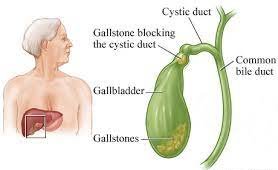
Gall stones
Gall stones are hard, pebble-like deposits that form in the gallbladder, a small organ located just below the liver. They are made of cholesterol, bile salts, and other substances found in bile, and can vary in size from a grain of sand to a golf ball.
They are formed when there is an imbalance in the substances that make up bile, which is a digestive fluid produced by the liver and stored in the gallbladder. Bile is composed of water, bile salts, cholesterol, bilirubin, and other substances.
When there is an excess of cholesterol or bilirubin in the bile, these substances can form hard, pebble-like deposits called gall stones. There are two types of gallstones:
- Cholesterol stones: These are the most common type of gallstones, accounting for 80% of cases. They form when there is an excess of cholesterol in the bile. Cholesterol can form crystals that clump together and form stones.
- Pigment stones: These stones are less common and are formed when there is an excess of bilirubin in the bile. Bilirubin is a waste product from the breakdown of red blood cells. When there is too much bilirubin, it can form into hard, dark-colored stones.
Foods that aggravate the gall bladder
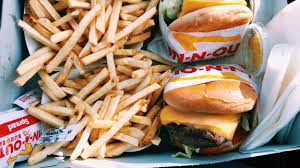
Certain foods may trigger symptoms in people with gallbladder problems or a history of gall stones. These foods can worsen gallbladder symptoms by causing the gallbladder to contract and release bile, which can exacerbate pain and discomfort.
Here are some foods that may aggravate the gallbladder:
- Fatty or fried foods: High-fat foods, such as greasy or fried foods, can cause the gallbladder to contract, leading to pain and discomfort.
- Spicy foods: Spicy foods can irritate the digestive system and trigger gallbladder symptoms.
- Dairy products: Dairy products, such as milk and cheese, may worsen symptoms in some people, as they can be difficult to digest.
- Processed foods: Processed foods that are high in sugar, salt, and additives can be difficult for the gallbladder to digest.
- Red meat: High-fat meats, such as beef and pork, can be difficult to digest and may trigger symptoms in some people.
- Chocolate and caffeine: Chocolate and caffeine can cause the gallbladder to contract, which can worsen symptoms.
- Alcohol: Alcohol can irritate the gallbladder and cause pain and discomfort.
Causes of gall stones
The exact cause of gall stones is not fully understood, but there are several factors that can contribute to their formation. Some of the common causes of gallstones include:
- Excess cholesterol: If there is too much cholesterol in the bile, it can crystallize and form gallstones.
- Excess bilirubin: If there is too much bilirubin in the bile, it can form gallstones. This may occur in certain medical conditions, such as liver cirrhosis or hemolytic anemia.
- Slow gallbladder emptying: When the gallbladder doesn’t empty completely or frequently enough, bile can become concentrated and lead to the formation of gallstones.
- Genetics: Some people may be more prone to developing gallstones due to inherited genetic factors.
- Obesity: Being overweight or obese can increase the risk of developing gall stones.
- Pregnancy: Hormonal changes during pregnancy can increase the risk of developing gall stones.
- Rapid weight loss: Losing weight too quickly can increase the risk of developing gallstones.
- Certain medications: Some medications, such as birth control pills or cholesterol-lowering drugs, may increase the risk of developing gallstones.
-
Certain medical conditions: Certain medical conditions, such as Crohn’s disease or cystic fibrosis, can increase the risk of developing gall stones.
Risk factors for gall stones
There are several risk factors that can increase the likelihood of developing gallstones. Some of the common risk factors include:
Being female: Women are more likely to develop gall stones than men, possibly due to the effect of estrogen on the gallbladder. Those who are pregnant, taking birth control pills, or undergoing hormone replacement therapy are also likely to suffer from gall stones.
Being overweight or obese: Being overweight or obese increases the risk of developing gallstones.
Being over age 40: Gall stones become more common as people get older, with the risk increasing after age 40.
Having a family history of gallstones: If other members of your family have had gall stones, you are more likely to develop them as well.
Having a sedentary lifestyle: Lack of physical activity can increase the risk of developing gall stones.
Eating a high-fat, low-fiber diet: A diet high in saturated and trans fats and low in fiber can increase the risk of developing gall stones.
Having certain medical conditions: Conditions that affect the gallbladder, such as gallbladder disease, and certain blood disorders can increase the risk of gall stones. Such diseases include diabetes, liver disease, or inflammatory bowel disease, can increase the risk of developing gallstones.
Taking certain medications: Some medications, such as cholesterol-lowering drugs or hormone replacement therapy, can increase the risk of developing gallstones.
Rapid weight loss: Losing weight too quickly, especially through crash dieting or fasting, can increase the risk of developing gallstones.
It’s important to note that not everyone with these risk factors will develop gallstones, and some people without these risk factors may still develop gallstones.
Symptoms of gall stones
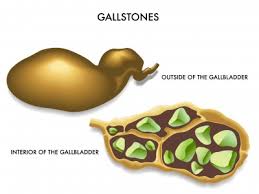
Gall stones often don’t cause any symptoms and are discovered incidentally during an imaging test for another condition. However, if a gallstone becomes trapped in a duct and blocks the flow of bile, it can cause a range of symptoms, including:
- Abdominal pain: The most common symptom of gall stones is a sudden and intense pain in the upper right part of the abdomen, which can last for several hours.
- Nausea and vomiting: Gall stones can cause nausea and vomiting, especially if the pain is severe.
- Jaundice: If a gallstone blocks the bile duct, it can cause jaundice, which is characterized by yellowing of the skin and eyes, dark urine, and pale stools.
- Fever and chills: If the gallbladder becomes inflamed due to a blocked duct, it can cause a fever and chills.
- Bloating and gas: Gall stones can cause bloating and gas, especially after eating a fatty meal.
- Heartburn: Gall stones can cause a burning sensation in the chest, similar to heartburn.
Diagnosis of gall stones
- Ultrasound: This is the most common method used to diagnose gall stones. Ultrasound uses sound waves to create images of the internal organs, including the gallbladder. This non-invasive test can detect the presence of gallstones and identify their size and location.
- Blood tests: Blood tests can help identify any inflammation or infection in the gallbladder or liver, which may indicate the presence of gallstones.
- CT scan: A CT scan may be used to get a detailed image of the gallbladder and surrounding organs. This test is particularly useful in identifying complications, such as inflammation or infection.
- HIDA scan: A HIDA scan is a specialized imaging test that uses a radioactive tracer to create images of the gallbladder and biliary system. This test can help identify any blockages or abnormalities in the bile ducts.
- Endoscopic retrograde cholangiopancreatography (ERCP): This test uses an endoscope, a flexible tube with a camera on the end, to examine the bile ducts. During the procedure, a dye is injected into the bile ducts to help make them visible on X-rays.
Complications of gall stones
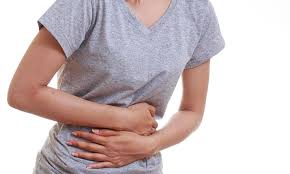
- Cholecystitis: This is inflammation of the gallbladder, usually caused by a blockage of the cystic duct by a gall stones. Symptoms include severe abdominal pain, fever, and nausea.
- Choledocholithiasis: This is the presence of gall stones in the common bile duct, which can cause blockages and lead to inflammation and infection.
- Pancreatitis: Inflammation of the pancreas can occur when a gallstone blocks the opening of the pancreatic duct. This can cause severe abdominal pain, nausea, and vomiting.
- Cholangitis: This is an infection of the bile ducts, often caused by a blockage from a gallstone. Symptoms include fever, chills, and abdominal pain.
- Gallbladder cancer: While rare, gallbladder cancer is more common in people with a history of gallstones.
Treatment for gall stones
The two main treatment options are:
- Surgery: The most common treatment for gallstones is surgery to remove the gallbladder, a procedure called cholecystectomy. This is usually done laparoscopically, a minimally invasive technique that involves making small incisions in the abdomen and using a tiny camera to guide the removal of the gallbladder. Without a gallbladder, bile flows directly from the liver into the small intestine.
- Nonsurgical methods: If surgery is not an option, or if the individual prefers a nonsurgical approach, there are several options available. These include medication to dissolve the gall stones, lithotripsy, a procedure that uses sound waves to break up the stones, and endoscopic retrograde cholangiopancreatography (ERCP), a procedure that uses an endoscope to remove the stones from the bile ducts.
Gallbladder surgery
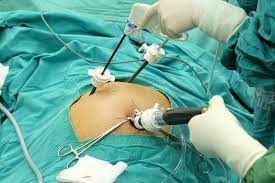
Gallbladder surgery, also known as cholecystectomy, is a procedure to remove the gallbladder. This may be necessary if a person has gallstones or other conditions that affect the gallbladder.
There are two types of cholecystectomy:
Laparoscopic cholecystectomy: This is the most common type of gallbladder surgery. It is minimally invasive and involves making several small incisions in the abdomen. A laparoscope, which is a thin, flexible tube with a camera and light on the end, is inserted through one of the incisions. The surgeon uses the laparoscope to see inside the abdomen and remove the gallbladder through one of the other incisions.
- Small incisions are made in the abdomen, and a laparoscope (a thin tube with a camera and light) is inserted through one of the incisions to view the gallbladder.
- The surgeon uses specialized instruments to carefully separate the gallbladder from its attachments to the liver and bile ducts.
- The gallbladder is removed through one of the incisions.
- The incisions are then closed with sutures or staples.
Open cholecystectomy: This is a more traditional type of gallbladder surgery that involves making a larger incision in the abdomen. This approach may be necessary if there are complications, such as severe inflammation or infection.
- A larger incision is made in the abdomen to access the gallbladder directly.
- The surgeon carefully separates the gallbladder from its attachments to the liver and bile ducts.
- The gallbladder is removed through the incision.
- The incision is then closed with sutures or staples.
Both types of cholecystectomies are typically done under general anesthesia and require a hospital stay of one or two days. Both procedures typically take about an hour to complete, although open cholecystectomy may take longer. After the surgery, you will be monitored in the recovery room for a few hours and then moved to a hospital room. You may need to stay in the hospital for a day or two, depending on the type of surgery and your individual situation. Recovery time varies depending on the type of surgery and individual factors, but most people can resume normal activities within a week or two.
Risks of gall bladder surgery
Like any surgical procedure, gallbladder surgery carries some risks. The risks may vary depending on the type of surgery you undergo (laparoscopic or open), your age, overall health, and any pre-existing medical conditions you may have. Some risks associated with gallbladder surgery include:
- Bleeding: There is a risk of bleeding during or after surgery, which may require blood transfusions or other interventions.
- Infection: There is a risk of infection at the site of the incision or in the abdominal cavity, which may require antibiotics or further treatment.
- Damage to surrounding organs: During surgery, nearby organs such as the liver, bile ducts, or intestines may be accidentally damaged, requiring further surgical interventions.
- Bile leakage: In some cases, bile may leak from the bile ducts after surgery, requiring further treatment.
- Blood clots: There is a risk of developing blood clots in the legs or lungs after surgery, which can be life-threatening.
- Anesthesia complications: There is a risk of complications related to anesthesia, such as an allergic reaction, heart or lung problem, or stroke.
- Conversion to open surgery: In some cases, laparoscopic surgery may need to be converted to an open procedure due to complications or difficulty visualizing the gallbladder.
- Persistent or new symptoms: In rare cases, gallbladder surgery may not relieve symptoms or may cause new symptoms to develop.
Care after a gall bladder surgery
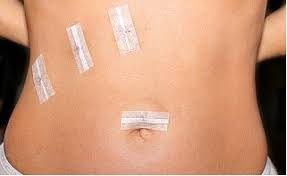
After gallbladder surgery, it is important to take care of yourself to promote a smooth and speedy recovery. Here are some tips to follow:
- Follow your doctor’s instructions: Your doctor will provide specific instructions on what activities are safe, what to eat and drink, and how to care for your incisions. It is important to follow these instructions carefully to promote healing and prevent complications.
- Manage pain: You may experience some pain or discomfort after surgery, which can be managed with pain medications prescribed by your doctor. It is important to take medications as directed and not to exceed recommended doses.
- Care for your incisions: You will have one or more incisions from the surgery, which may be covered with bandages or surgical tape. It is important to keep the incisions clean and dry, and to watch for signs of infection such as redness, swelling, or discharge.
- Gradually resume physical activity: You may need to avoid strenuous activities or heavy lifting for a few weeks after surgery to allow your body to heal. Your doctor will provide specific guidelines on what activities are safe and when you can resume them.
- Eat a healthy diet: Your doctor will provide specific instructions on what to eat and drink after surgery. Initially, you may need to stick to a clear liquid diet before gradually adding solid foods back into your diet. In general, it is recommended to avoid high-fat or spicy foods for a few weeks after surgery.
- Attend follow-up appointments: You will need to schedule follow-up appointments with your doctor to monitor your recovery and ensure there are no complications.
- Monitor for digestive changes: Without a gallbladder, bile flows directly from the liver into the small intestine, which can cause some digestive changes such as diarrhea or more frequent bowel movements. These symptoms are usually temporary and improve over time.
Life after a gall bladder surgery
After gallbladder surgery, most people can resume normal activities within a few days to a week, depending on the type of surgery performed and individual recovery time. Here are some things to expect after gallbladder surgery:
- Diet: Your doctor will provide specific instructions on what to eat and drink after surgery. Initially, you may need to stick to a clear liquid diet before gradually adding solid foods back into your diet. In general, it is recommended to avoid high-fat or spicy foods for a few weeks after surgery.
- Physical activity: You may need to avoid strenuous activities or heavy lifting for a few weeks after surgery to allow your body to heal. Your doctor will provide specific guidelines on what activities are safe and when you can resume them.
- Pain management: You may experience some pain or discomfort after surgery, which can be managed with pain medications prescribed by your doctor.
- Follow-up appointments: You will need to schedule follow-up appointments with your doctor to monitor your recovery and ensure there are no complications.
- Digestive changes: Without a gallbladder, bile flows directly from the liver into the small intestine, which can cause some digestive changes such as diarrhea or more frequent bowel movements. These symptoms are usually temporary and improve over time.
- Long-term health: While gallbladder removal is generally considered safe, some studies suggest a slightly increased risk of certain health conditions such as colon cancer or digestive problems. It is important to maintain a healthy diet and lifestyle after surgery to promote long-term health.
Natural remedies to combat gall stones
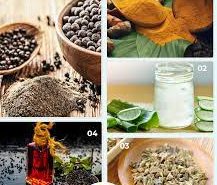
While there are no proven natural remedies that can cure gall stones, there are some steps you can take to help alleviate symptoms and prevent the formation of new gall stones. Some natural remedies that may be helpful include:
- Eating a healthy diet: A diet rich in fiber, fruits, vegetables, and whole grains, and low in saturated and trans fats, can help prevent the formation of new gallstones.
- Staying hydrated: Drinking plenty of water and staying hydrated can help flush out the bile and prevent the formation of new gallstones.
- Herbal remedies: Some herbs, such as milk thistle, dandelion root, and turmeric, may help improve liver function and prevent the formation of new gallstones. However, it’s important to talk to a healthcare professional before taking any herbal remedies, as they may interact with other medications or have side effects.
- Exercise: Regular exercise can help maintain a healthy weight and reduce the risk of developing gallstones.
- Stress management: Stress can contribute to the formation of gallstones, so finding ways to manage stress, such as through meditation, yoga, or deep breathing exercises, may be helpful.
- Acupuncture: There is limited research on the use of acupuncture for gall stones specifically. However, acupuncture has been shown to have potential benefits for individuals with digestive issues and pain, which may be associated with gall stones. Acupuncture involves the insertion of thin needles into specific points on the body, which can stimulate the release of endorphins and other natural pain-relieving chemicals in the body. This can help reduce pain and inflammation, which may be associated with gall stones.
There is some evidence to suggest that consuming apple juice may help prevent the formation of gall stones. Apple juice is a good source of pectin, a type of soluble fiber that can help lower cholesterol levels and reduce the risk of developing gall stones.
However, it is important to note that apple juice alone is not a substitute for proper diagnosis and treatment of gall stones. If you suspect you have gall stones, it is important to consult with a healthcare professional for proper diagnosis and treatment. Additionally, if you have been advised to avoid certain foods or beverages due to a medical condition, you should follow the advice of your healthcare provider.
Artichokes
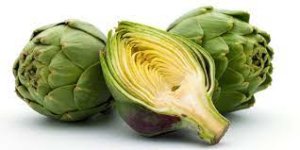
Artichokes are a good source of antioxidants, fiber, and nutrients, and may have some potential benefits for individuals with gall stones. Some studies have suggested that artichoke extract may help improve bile flow and reduce cholesterol levels in the bile, which can help prevent the formation of gall stones.
Yoga
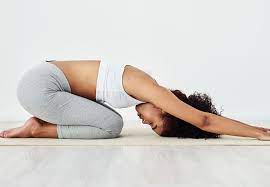
While there is no direct evidence that yoga can help with gall stones, regular exercise and physical activity may have potential benefits for individuals with gall stones. Exercise can help promote overall health and well-being, reduce inflammation, and improve digestive function, which may help prevent the formation of gall stones. Yoga, in particular, may have some potential benefits for individuals with gall stones, as it can help reduce stress and improve flexibility and circulation. Stress has been linked to the development of gall stones, and reducing stress levels may help reduce the risk of developing gall stones.
It is important to note that while yoga and exercise may have potential benefits for individuals with gall stones, they are not a substitute for proper diagnosis and treatment. If you suspect you have gall stones, it is important to consult with a healthcare professional for proper diagnosis and treatment. Additionally, if you have been advised to avoid certain activities or exercises due to a medical condition, you should follow the advice of your healthcare provider.
Gall stones are hardened deposits that can form in the gallbladder and cause discomfort, pain, and inflammation. In some cases, they can cause serious complications, and medical attention should be sought immediately.
Here are some signs and symptoms that may indicate the need for urgent medical care for gallstones:
- Intense and persistent pain in the upper right or middle of the abdomen
- Pain that spreads to the back or right shoulder
- Nausea and vomiting
- Fever and chills
- Yellowing of the skin or eyes (jaundice)
- Clay-colored stools and dark urine
If you experience any of these symptoms, seek medical attention immediately. In some cases, gall stones can cause blockages in the bile ducts, leading to serious complications such as infections, pancreatitis, or liver damage. Prompt medical care can help prevent these complications and ensure proper treatment.
Disclaimer: The information provided in this content is for general informational purposes only. It is not intended as medical or healthcare advice, diagnosis, or treatment. Always seek the advice of a qualified healthcare professional with any questions you may have regarding a medical condition or healthcare decisions.

